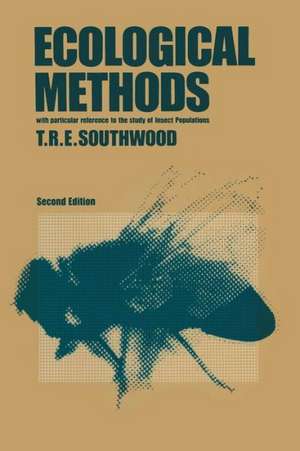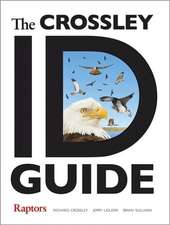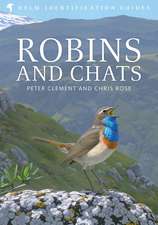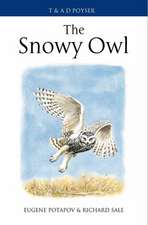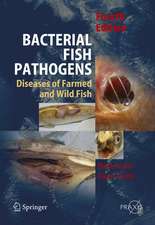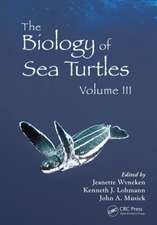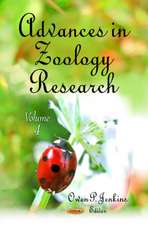Ecological Methods: With Particular Reference to the Study of Insect Populations
Autor T. R. Southwooden Limba Engleză Paperback – 31 oct 1987
| Toate formatele și edițiile | Preț | Express |
|---|---|---|
| Paperback (2) | 402.76 lei 43-57 zile | |
| SPRINGER NETHERLANDS – noi 2011 | 402.76 lei 43-57 zile | |
| SPRINGER NETHERLANDS – 31 oct 1987 | 902.06 lei 43-57 zile |
Preț: 902.06 lei
Preț vechi: 1100.06 lei
-18% Nou
Puncte Express: 1353
Preț estimativ în valută:
172.61€ • 180.67$ • 143.67£
172.61€ • 180.67$ • 143.67£
Carte tipărită la comandă
Livrare economică 31 martie-14 aprilie
Preluare comenzi: 021 569.72.76
Specificații
ISBN-13: 9780412307102
ISBN-10: 0412307103
Pagini: 548
Ilustrații: 548 p. 10 illus.
Dimensiuni: 155 x 235 x 28 mm
Greutate: 0.76 kg
Ediția:2nd ed. 1978
Editura: SPRINGER NETHERLANDS
Colecția Springer
Locul publicării:Dordrecht, Netherlands
ISBN-10: 0412307103
Pagini: 548
Ilustrații: 548 p. 10 illus.
Dimensiuni: 155 x 235 x 28 mm
Greutate: 0.76 kg
Ediția:2nd ed. 1978
Editura: SPRINGER NETHERLANDS
Colecția Springer
Locul publicării:Dordrecht, Netherlands
Public țintă
ResearchCuprins
1 Introduction to the study of animal populations.- 1.1 Population Estimates.- 1.2 Errors and Confidence.- 2 The sampling programme and the measurement and description of dispersion.- 2.1 Preliminary Sampling.- 2.2 The Sampling Programme.- 2.3 Dispersion.- 2.4 Sequential Sampling.- 2.5 Presence or Absence Sampling.- 2.6 Sampling a Fauna.- 2.7 Biological and Other Qualitative Aspects of Sampling.- 3 Absolute population estimates using marking techniques.- 3.1 Methods of Marking Animals.- 3.2 Capture-Recapture Methods of Estimating Population Parameters.- 4 Absolute population estimates by sampling a unit of habitat —air, plants, plant products and vertebrate hosts.- 4.1 Sampling from the AIR.- 4.2 Sampling From Plants.- 4.3 Sampling from Vertebrate Hosts.- 5 Absolute population estimates by sampling a unit of habitat-soil and litter.- 5.1 Sampling.- 5.2 Mechanical Methods of Extraction.- 5.3 Behavioural or Dynamic Methods.- 5.4 Summary of the Applicability of the Methods.- 6 Absolute population estimates by sampling a unit of habitat — freshwater habitats.- 6.1 Open Water.- 6.2 Vegetation.- 6.3 Bottom Fauna.- 7 Relative methods of population measurement and the derivation of absolute estimates.- 7.1 Factors Affecting the size of Relative Estimates.- 7.2 The uses of Relative Methods.- 7.3 Relative Methods — Catch Per Unit Effort.- 7.4 Relative Methods — Trapping.- 8 Estimates based on products and effects of insects.- 8.1 Products.- 8.2 Effects.- 9 Observational and experimental methods for the estimation of natality, mortality and dispersal.- 9.1 Natality.- 9.2 Mortality.- 9.5 Dispersal.- 10 The Construction, description and analysis of age-specific life-tables.- 10.1 Types of Life-Table and the Budget.- 10.2 The Construction of a Budget.- 10.3 The Description ofBudgets and Life-Tables.- 10.4 The Analysis of Life-Table Data.- 11 Age-grouping of insects, time-specific life-tables and predictive population models.- 11.1 Age-Grouping of Insects.- 11.2 Time-Specific Life Table and Survival Rates.- 11.3 Predictive Population Models.- 12 Systems analysis and modelling in ecology.- 12.1 Types of Systems Model.- 12.2 Analysis and Simulation in Models.- 12.3 Deterministic and Stochastic Models.- 12.4 Difference and Differential Models.- 13 Diversity, species packing and habitat description.- 13.1 Diversity.- 13.2 Species Packing.- 13.3 Habitats.- 14 The estimation of productivity and the construction of energy budgets.- 14.1 Estimation of Standing Crop.- 14.2 Estimation of Energy Flow.- 14.3 The Energy Budget, Efficiencies and Transfer Coefficients.- 14.4 Assessment of Energy and Time Cost Strategies.- Author Index.- General Index.
